Much has been said about the lack of “housing supply” across Australia, however what this actually means, is widely misunderstood.
There is significant difference between having parcels of vacant or zoned land and those parcels having the capability to deliver new homes to the market.
Different forms of development – greenfield, brownfield and infill – each have nuances relating to delivery.
“Brownfields” development involves transformation and rehabilitation of former commercial or industrial sites into residential and often mixed-use in established areas, allowing medium or higher density housing. “Infill” involves rezoning existing residential to allow higher densities, creating additional homes in places with no unused land left to develop.
Complaints about infill and brownfield usually boil down to “this area looked a certain way when I bought, so nothing should change.” It’s an understandable and politically challenging position, with local opposition substantially delaying and limiting new supply in established areas, but good development actually funds better infrastructure and lifestyle facilities for communities.
“Greenfields” or previously undeveloped areas are usually turned into suburban residential or employment uses, often changing from farming to urban use. Whether metro or regional, this is usually less-expensive than prevailing established home prices.
Pressure on greenfield development comes from those preferring more space or a relaxed lifestyle environment compared to infill, denser living. This impacts satellite towns around major capitals or lifestyle areas like Victoria’s Surf Coast, Northern NSW and SE QLD that planned for historically lower growth rates. However, the current uptick in demand saw any housing and land available snapped up quickly which contributed to rapid price growth for both new and established housing, and the planning system not equipped to respond quickly to demand.
Both zoning and infrastructure are keys to the greenfield supply equation. A previous 10-year pipeline of zoned land, was absorbed in some markets in just 2 years, leaving minimal land available for further development.
But even for properly zoned land, supply is held back due to difficulty in actually getting it through planning.
Planning systems across Australia have seen a continued increase in the number of applications, which are now several times more complex compared with a decade ago. Coupled with conflicting policies, interests, duplication and lack of consistency and the same number of people (or fewer) assessing them, it’s not uncommon for one planning officer to provide feedback, that conflicts with a second person’s feedback later.
The capacity of the planning assessment system also hasn’t kept up with the growth of complexity, which means processes that might have taken 6 or 12 months, now take 2 or 3 years or more, adding cost and uncertainty.
This all relates to obtaining a DA in the first instance, yet timeframes for necessary post-DA approvals, for works and building permits have also blown out, now taking months.
NHFIC has identified it takes a minimum of 6 years from identification of new land for potential development to the first delivery of a new dwelling.
This impacts delivery capability, even before adding on the current shortages of labour and materials.
Infrastructure – sewer, power, water, roads – necessary to allow physical development, even if zoned appropriately, is another major hurdle, as is the community infrastructure that is often missing.
Developers are actually great at delivering social infrastructure, open space and local facilities, yet don’t control the delivery or management of bus services on agreed routes, nor community centres that new a development funds, which often lag.
Fixing supply needs a holistic review of planning systems across Australia, from zoning, infrastructure planning and delivery, to planning and building approvals and most critically, bringing existing communities on the journey.
We need systems which are flexible, that allow faster processing and ultimately enable housing supply to be more responsive to both where and what the demand is.
At the heart of UDIA National’s Election Campaign – A Plan for Prosperity, is the need for the next Federal Government to lead the country out of the housing crisis impacting most communities. This important document provides accessible solutions which include a steely focus on unlocking an actual supply pipeline.
It also needs a change in attitude from decision makers. Housing development is a highly complex and risky business, involving enormous investments and capital risk, and navigation of an incredibly complex system to deliver an important community need – new homes. Part of the solution is to increase trust of our industry, recognising developers not as opponents, but actually as partners of Councils, authorities and communities in delivering new housing supply.

Maxwell Shifman
National President
Urban Development Institute of Australia
Max Shifman is currently the President of the Urban Development Institute of Australia National. He is also the Chief Operating Officer of Intrapac Property, one of Australia’s largest private developers, and has extensive experience in residential development, from large-scale masterplanned subdivisions, integrated townhouse developments and apartments, across Australian jurisdictions.
Contact details:
Deanna Lane, National Media & Communications Manager 0416 295 898

